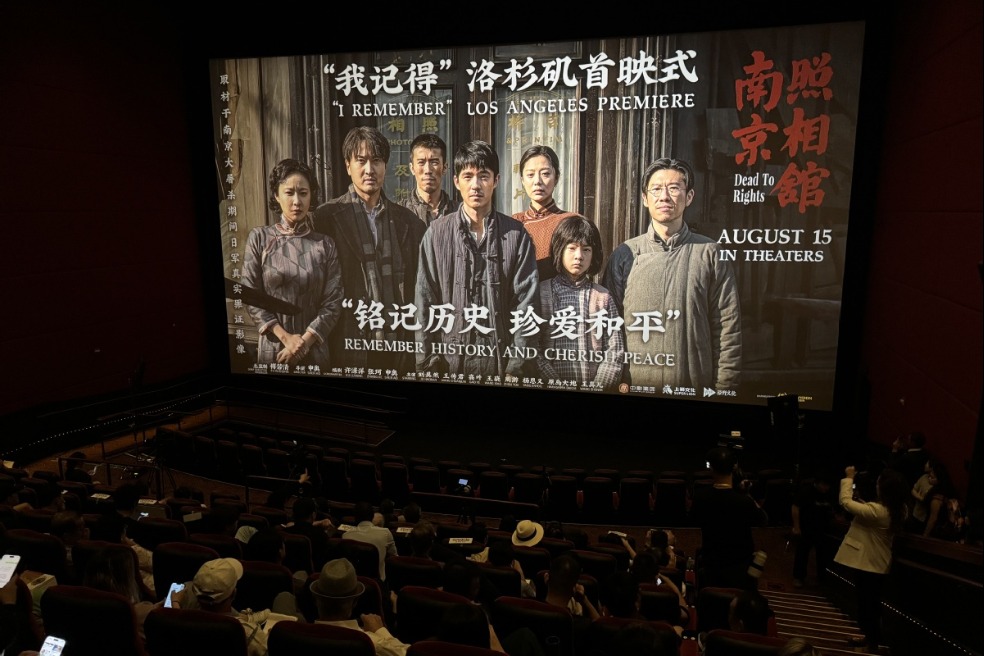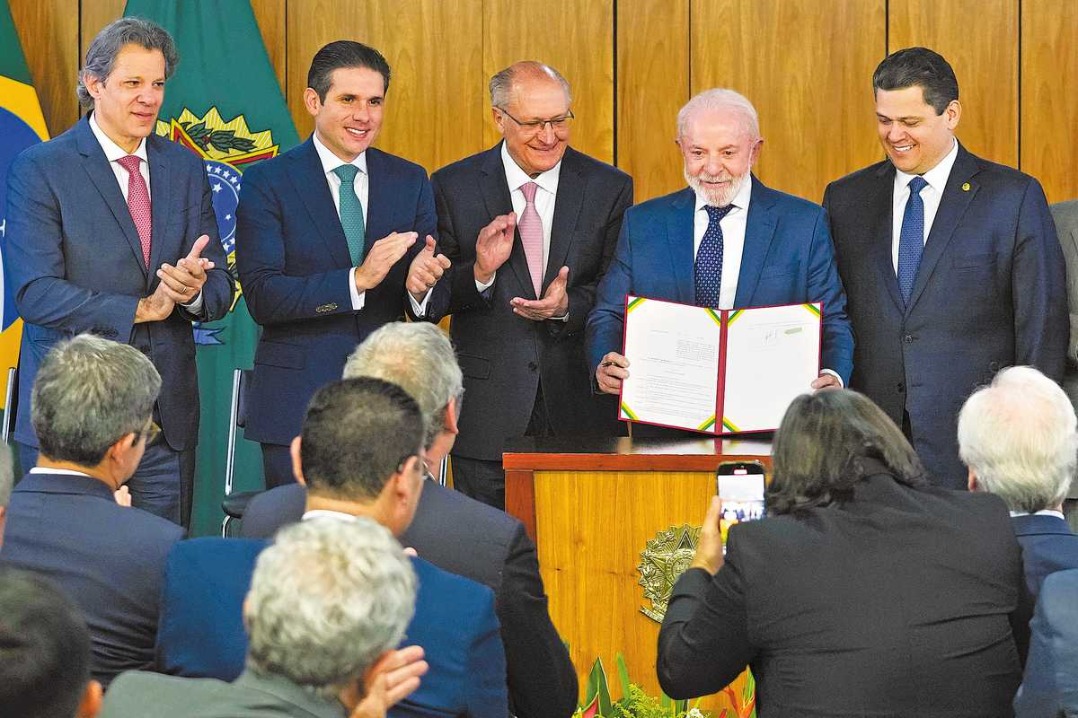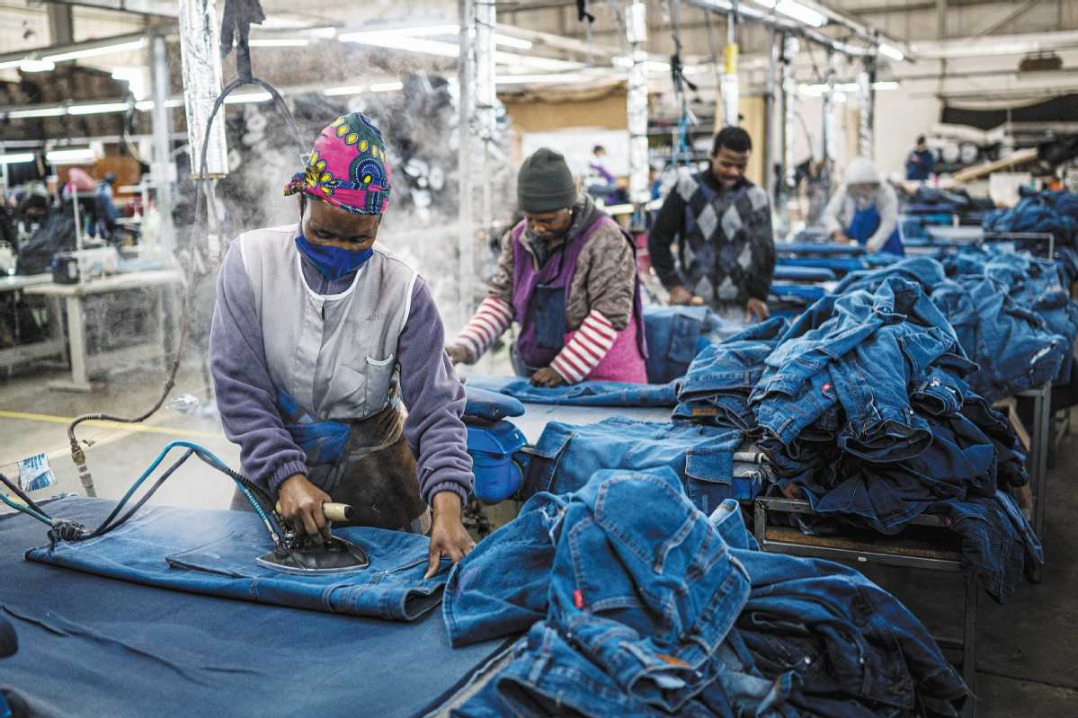Adversity propelling Chinese tech metamorphosis

History is replete with paradoxes where adversity births ingenuity. Napoleon's blockade of continental Europe catalyzed Britain's industrial revolution, and the Cold War space race gave rise to Silicon Valley. Today, the US-China tech rivalry — intensified by tariffs imposed by the administration of United States President Donald Trump — is scripting a similar paradox.
Recently, economist Jin Keyu's incisive analysis in the Financial Times posited that punitive tariffs, rather than crippling China, may accelerate its technological ascent. This thesis is not merely plausible, it is unfolding with striking vigor, revealing the resilience of an economy transforming pressure into propulsion.
Jin's invocation of historical precedent is astute. When Napoleon sought to isolate Britain, he inadvertently spurred innovation in textiles and steam power. Similarly, the US' unilateral tariffs were once as much as 245 percent on certain Chinese goods. However, the measure did not kneecap the Chinese economy, but redirected its trajectory.
According to the World Bank, China's research and development expenditure surged to 2.64 percent of its GDP in 2023 ($461.87 billion), eclipsing the European Union's 2.2 percent and rivaling the US' 3.1 percent. This investment is strategic: 70 percent targets applied sectors such as artificial intelligence, quantum computing and semiconductors — areas where China aims to neutralize US sanctions.
The semiconductor saga epitomizes this shift. Once dependent on US suppliers for 80 percent of high-end chips, China's SMIC and Hua Hong Semiconductor now command 11 percent of global foundry revenue, doubling since 2020.
Sanctions forced a reckoning: China's domestic chip production hit 29.4 billion units in 2023, a 34 percent annual increase. Meanwhile, Huawei's 2023 Mate 60 Pro, powered by a 7-nanometer SMIC chip, symbolized defiance. Boston Consulting Group warns that China could control 21 percent of global semiconductor capacity by 2030, up from 15 percent today — a testament to the law of unintended consequences.
China's AI Plus initiative, which was launched in 2024, aims to embed AI across industries, from agriculture to fintech. Startups such as DeepSeek and SenseTime now rival OpenAI in parameter scale, with DeepSeek's models deployed in 15 countries. In quantum computing, China leads in photonic qubits, achieving a 255-photon quantum advantage in 2023. Such strides are bolstered by State-industry symbiosis, as 40 percent of China's AI patents originate from private firms, a deliberate pivot from State-led monopolies.
Chinese companies are also thriving in international markets. Xiaomi and Transsion exemplify globalization 2.0. While 75 percent of Xiaomi's revenue now hails from overseas, Transsion dominates Africa's smartphone market. Carmaker BYD, surpassing Tesla in electric vehicle sales, leverages 90 percent vertical integration — a moat against supply shocks. Private investment in tech reached $1.2 trillion in 2023, reflecting renewed confidence.
While manufacturing remains pivotal, China's digital economy, which was worth $8.6 trillion in 2023, is its stealth weapon. Though China's trade in services constitutes a mere 6 percent of the global share, it grew 12 percent year-on-year, driven by cloud computing (Alibaba Cloud, Tencent) and fintech (Ant Group).
As physical supply chains fragment, the digital ones consolidate. China's cross-border e-commerce hit 2.3 trillion yuan ($319 billion) in 2023, with Shein and Temu redefining global retail. The "Digital Silk Road" now links over 100 countries, a parallel to Elon Musk's Starlink, but with geopolitical heft.
The US misapprehends and grossly underestimates China's adaptive capacity. The CHIPS and Science Act's $52 billion subsidy pales next to China's $150 billion semiconductor fund. Restricting the export of Dutch semiconductor giant ASML's extreme ultraviolet lithography machines to China merely delayed, not derailed, China's chip ambitions.
Meanwhile, the US' AI lead is narrowing. China produces 40 percent of AI research papers globally compared with 35 percent for the US, according to Stanford's AI Index. In green tech, China's $546 billion investment dwarfs the US' $141 billion, cementing its renewable energy hegemony.
The tariff war's legacy may be a world bifurcated into tech spheres, yet interdependent. China's rise isn't zero-sum; its market absorbs 33 percent of global chips, 50 percent of EVs and 70 percent of solar panels.
The challenge for the West is to compete without containment, recognizing that innovation thrives not in isolation but in the friction of rivalry. As economist Jin astutely observes, the Trump administration's tariffs may yet be remembered not as a check on China, but as the crucible that forged China's technological metamorphosis. In this high-stakes game, adversity is the mother of ascension.
The author is an economics and politics analyst, award-winning columnist of Philippine Star and Abante newspapers, book author and moderator of the Pandesal Forum.

































